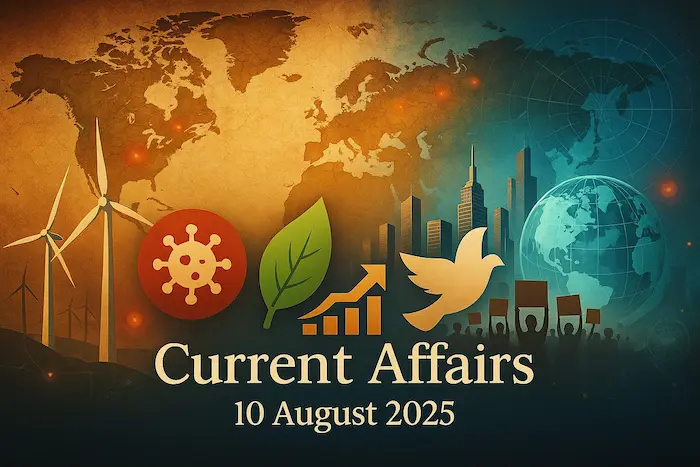1. Revision of Creamy Layer Income Limit – “Need of the Hour” – Polity
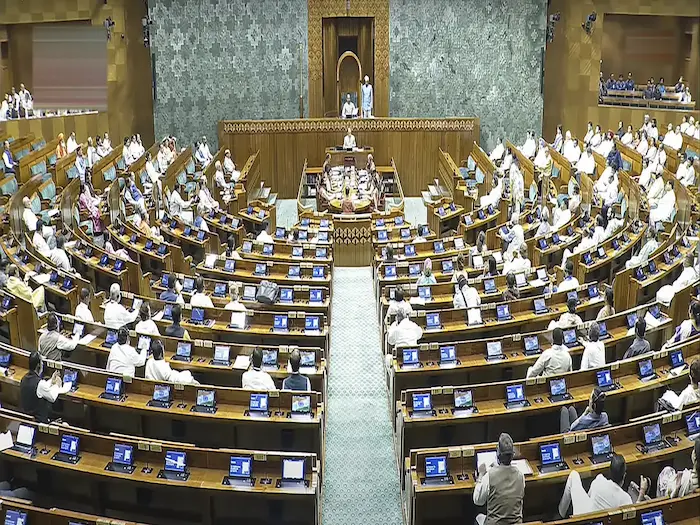
Why in News
The Parliamentary Committee on Welfare of OBCs has recommended revising the creamy layer income ceiling for OBC reservation benefits, currently set at ₹8 lakh per annum (unchanged since 2017).
They argue that inflation and rising incomes have eroded the effectiveness of the threshold.
However, the Ministry of Social Justice and Empowerment has stated that no such proposal is under consideration.
Background – The Creamy Layer Concept
- Introduced by the Supreme Court in Indra Sawhney v. Union of India (1992) to exclude the “socially advanced” among OBCs from reservation benefits.
- Income ceiling to determine creamy layer:
- ₹1 lakh – 1993
- ₹2.5 lakh – 2004
- ₹4.5 lakh – 2008
- ₹6 lakh – 2013
- ₹6.5 lakh – 2014
- ₹8 lakh – 2017 (current)
- DoPT 1993 order: Mandates revision every 3 years.
Constitutional Basis for OBC Reservations
- Article 15(4) – Special provisions for socially & educationally backward classes (SEBCs), SCs, STs.
- Article 16(4) – Reservation in public employment for underrepresented backward classes.
- Article 340 – President can appoint a commission to investigate backward class conditions.
Committee’s Concerns on Current Threshold
- Inflation impact – The ₹8 lakh limit no longer reflects real economic deprivation.
- Exclusion of needy – Many deserving OBC families marginally above the threshold remain disadvantaged.
- Socio-economic upliftment – Broader coverage can increase access to jobs, education, and welfare schemes.
Significance of Revising the Limit
- Equity – Ensures reservation reaches the truly disadvantaged.
- Compliance – Aligns with DoPT’s periodic revision mandate.
- Policy Relevance – Adapts to changing economic conditions.
Challenges in Revision
- Risk of over-expansion – May dilute benefits for the most marginalized.
- Measuring backwardness – Social deprivation not fully captured by income criteria.
- Political sensitivity – Reservation changes require broad consensus.
Way Forward
- Automatic inflation-indexed revision of income ceiling.
- Comprehensive backwardness index – income + education + occupation + rural-urban disparities.
- Targeted scholarships for lower-income OBC students.
- Regular socio-economic surveys for evidence-based policymaking.
Value Addition – Key Developments in OBC Policy
- Kaka Kalelkar Commission (1953) – recommended caste-based reservations (not implemented).
- Mandal Commission (1979) – recommended 27% OBC reservation, implemented in 1990.
- Indra Sawhney Judgment (1992) – capped total reservations at 50% and introduced creamy layer.
- 102nd Amendment (2018) – constitutional status to NCBC.
- 105th Amendment (2021) – restored states’ power to identify OBCs for their own purposes.
Exam Connect – Possible Questions
Prelims
1. Consider the following statements about the “creamy layer” in OBC reservations:
1.It was introduced through the 102nd Constitutional Amendment Act, 2018.
2. It excludes socially advanced individuals among OBCs from reservation benefits.
3. Its income ceiling is revised by the Department of Personnel & Training.
Which of the statements given above is/are correct?
A. 1 and 2 only
B. 2 and 3 only
C. 1 and 3 only
D. 1, 2 and 3
Answer: B. 2 and 3 only
2. Which of the following constitutional provisions deal with reservations for backward classes?
1. Article 15(4)
2. Article 16(4)
3. Article 340
Select the correct answer using the code below:
1 only
B. 1 and 2 only
C. 1, 2 and 3
D. 2 and 3 only
Answer: C. 1, 2 and 3
Mains
1. “The creamy layer provision ensures that reservation benefits reach the truly disadvantaged.” Discuss in the context of recent demands for revising the income ceiling for OBCs.
2. Examine the constitutional, social, and economic considerations involved in determining the creamy layer criteria for OBC reservation.
2. Bharat Forecast System – Precision Upgrade in India’s Weather Prediction – Science & Technology
Why in News
The Union Minister of State for Science & Technology and Earth Sciences informed the Rajya Sabha about the launch of the Bharat Forecast System (BharatFS) — an indigenously developed, high-resolution weather forecasting model aimed at improving extreme weather prediction and localized advisories.
Background
- India faces increasing extreme weather events (cloudbursts, heatwaves, cyclones) due to climate change.
- Previous forecasting models offered coarser resolution, limiting the accuracy for local-level predictions.
Key Features of BharatFS
- Indigenous Development
- Developed by IITM-Pune in collaboration with NCMRWF-Noida and India Meteorological Department (IMD).
- High-Resolution Modelling
- Uses Triangular Cubic Octahedral (TCo) dynamical grid.
- Horizontal resolution: 6 km (significantly better than earlier ~12 km models).
- Supercomputing Backbone
- Real-time simulations powered by IITM-Pune and NCMRWF-Noida high-performance computing systems.
- Localized Forecasting
- Generates forecasts for clusters of panchayats.
- Better anticipation of extreme rainfall, storms, and temperature anomalies.
- Performance Gains
- 30% improvement in accuracy of extreme rainfall forecasts compared to earlier models.
Significance & Applications
- Agriculture: Farmers get precise advisories for sowing, irrigation, and harvesting.
- Water Management: Reservoir authorities can plan monsoon water release/storage.
- Disaster Management: Improved preparedness for cyclones, floods, and cloudbursts.
- Self-Reliance: Reduces dependency on imported forecasting systems and enhances regional leadership in meteorology.
Exam Connect – Possible Questions
Prelims
1. The recently launched Bharat Forecast System (BharatFS) is:
A. An indigenous high-resolution weather forecasting model using a Triangular Cubic Octahedral grid.
B. A satellite-based remote sensing network for real-time weather monitoring.
C. A mobile app for farmers’ weather advisory.
D. A joint Indo-French climate data-sharing programme.
Answer: A. An indigenous high-resolution weather forecasting model using a Triangular Cubic Octahedral grid.
2. Which of the following institutions are directly associated with the development and operation of the Bharat Forecast System?
1. India Meteorological Department (IMD)
2. IITM-Pune
3. NCMRWF-Noida
4. ISRO
Select the correct answer using the code given below:
A. 1, 2 and 3 only
B. 1 and 4 only
C. 2, 3 and 4 only
D. 1, 2, 3 and 4
Answer: A. 1, 2 and 3 only
Mains
1. Discuss the significance of the Bharat Forecast System in enhancing India’s disaster preparedness and agricultural resilience.
2. How can indigenous high-performance computing and advanced modelling techniques strengthen India’s meteorological capabilities?
3. Mauryan-Era Archaeological Discoveries at Topra Kalan, Haryana – History & Culture
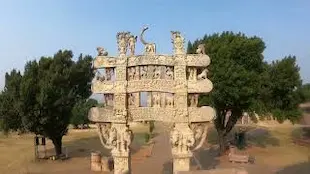
Why in News
A Ground Penetrating Radar (GPR) survey at Topra Kalan, Haryana, conducted by the Haryana Archaeology and Museums Department in collaboration with IIT Kanpur, has revealed archaeological remains dating back to c. 1500 BCE and signs of Buddhist influence during the Mauryan period.
Background
- Topra Kalan’s historical significance:
- Associated with the Delhi–Topra Ashokan pillar, originally erected here and later shifted to Delhi by Firoz Shah Tughlaq in the 14th century.
- Mentioned in the accounts of Sir Alexander Cunningham and Chinese traveler Hiuen Tsang as a Buddhist center.
- Survey methodology:
- Ground Penetrating Radar (GPR) allows identification of subsurface features without destructive excavation.
- Survey undertaken in January 2025.
Key Discoveries
- Structural Remains
- Buried walls, platforms, room-like enclosures at depths of 4–5 meters.
- Possible Religious Structure
- Dome-shaped feature identified as a possible Buddhist stupa.
- Material Culture
- Painted Grey Ware (associated with Later Vedic period & early Iron Age).
- Black-and-Red Ware, Black-on-Red Ware, Black Ware.
- Stamped pottery, moulded bricks, beads.
- Chronology
- Earliest evidence: ~1500 BCE settlement.
- Later phases: Mauryan-era Buddhist influence.
Significance
- Cultural Continuity: Indicates habitation from Late Harappan / Vedic period to Mauryan and later medieval times.
- Buddhist Heritage: Strengthens historical evidence of Buddhist activity in Haryana during the Mauryan period.
- Scientific Methodology: Demonstrates how non-invasive technology can reveal archaeological data without damaging heritage sites.
- Tourism Potential: Enhances Haryana’s position on the Buddhist tourism circuit.
Exam Connect – Possible Questions
Prelims
1. With reference to Topra Kalan in Haryana, consider the following statements:
1. It is the original site of an Ashokan pillar later relocated to Delhi.
2. Recent surveys there have used Ground Penetrating Radar technology.
3. The site shows evidence of Painted Grey Ware dating to around 1500 BCE.
Which of the statements given above is/are correct?
A. 1 and 2 only
B.2 and 3 only
C. 1 and 3 only
D. 1, 2 and 3
Answer: D. 1, 2 and 3
2. Which of the following correctly matches the archaeological culture with its general period?
A. Painted Grey Ware – Later Vedic period
B. Black-and-Red Ware – Mauryan period only
C. Northern Black Polished Ware – Harappan period
D. Ochre Coloured Pottery – Medieval period
Answer: A. Painted Grey Ware – Later Vedic period
Mains
1. Discuss the historical significance of Topra Kalan in the context of the Mauryan Empire and Buddhist heritage in North India.
2. Evaluate the role of modern technologies such as Ground Penetrating Radar in archaeological exploration and heritage conservation in India.
4. MERITE Scheme – Multidisciplinary Education and Research Improvement in Technical Education – Polity
Why in News
The Union Cabinet has approved the MERITE Scheme, a Central Sector initiative aimed at enhancing the quality, equity, and governance in technical education across India.
Background
- Developed in collaboration with the World Bank.
- Aligned with National Education Policy (NEP) 2020 goals for multidisciplinary, industry-oriented technical education.
Key Features
- Type & Coverage
- Central Sector Scheme – fully funded by the Central Government (with part of funds from an external loan).
- Targets government and government-aided engineering institutions and polytechnics in all States & UTs.
- Funding
- Total allocation: ₹4,200 crore (2025–26 to 2029–30).
- ₹2,100 crore from World Bank loan; remainder from GoI budget.
- Fund flow via Central Nodal Agency to selected institutions.
- Institutional Participation
- 275 institutions expected to benefit: NITs, State Engineering Colleges, Polytechnics, ATUs.
- Collaboration with IITs, IIMs, AICTE, NBA for implementation.
- Key Interventions
- Internship opportunities with industry.
- Curriculum modernization for industry relevance.
- Faculty development programmes.
- Research hubs and incubation/innovation centres.
- Skill labs, language workshops, and entrepreneurship training.
- Support for States/UTs
- Capacity building for State/UT departments managing technical education.
Significance
- Skill-Industry Alignment – Enhances employability through modern curricula and internships.
- Research Ecosystem – Encourages innovation in technical institutions.
- Equity & Access – Benefits smaller state colleges alongside central institutions.
- NEP 2020 Implementation – Supports multidisciplinary and flexible learning pathways.
Exam Connect – Possible Questions
Prelims
1. The MERITE Scheme recently approved by the Union Cabinet is aimed at:
A. Reforming legal education in India.
B. Enhancing the quality of technical education in government institutions.
C. Promoting online learning in primary schools.
D. Revamping teacher training in Kendriya Vidyalayas.
Answer: B. Enhancing the quality of technical education in government institutions.
2. Which of the following statements regarding the MERITE Scheme is/are correct?
1. It is a Central Sector Scheme with funding support from the World Bank.
2. It covers only centrally funded technical institutions like IITs and NITs.
3. It aligns with the objectives of the National Education Policy, 2020.
Select the correct answer using the code below:
A. 1 and 3 only
B. 2 only
C. 1 and 2 only
D. 1, 2 and 3
Answer: A. 1 and 3 only
Mains
1. Discuss how the MERITE Scheme can bridge the gap between technical education and industry needs in India.
2. Examine the role of international collaboration in strengthening India’s higher and technical education sector, with reference to the MERITE Scheme.
5. Industrial Accidents – The Human Cost of Indifference – Environment

Why in News
India’s industrial sector — including oil refineries, chemical plants, factories, and construction sites — is vital to economic growth.
However, over 6,500 workers have died in industrial accidents in the past five years, highlighting systemic negligence, weak regulation, and societal apathy toward worker safety.
Key Data
- Fatalities (last 5 years): 6,500+ workers.
- State hotspots: Andhra Pradesh & Tamil Nadu – 200+ fatalities each from major mishaps.
- Chemical accidents (2022): 130 incidents → 218 deaths, 300+ injuries.
Common Causes of Industrial Accidents
- Regulatory Gaps
- Factories operating without Fire No-Objection Certificates (NOC).
- Superficial safety audits, rare prosecutions, negligible penalties.
- Infrastructure Failures
- Faulty fire systems: Missing alarms, extinguishers, sensors.
- Blocked/inaccessible emergency exits.
- Operational Negligence
- No permit-to-work systems for hazardous jobs.
- Workers — often migrants or contract labourers — lack safety training (language barriers worsen the problem).
- Cultural & Policy Issues
- Safety taken seriously only post-disaster.
- Societal undervaluing of marginalised workers’ lives.
Comparative Perspective
- Germany & Japan: Safety is a core industrial value; strong legal enforcement.
- India: Safety seen as an afterthought; reactive rather than preventive approach.
Underlying Causes
- Weak enforcement of safety laws (Factories Act, 1948; Occupational Safety, Health and Working Conditions Code, 2020).
- Lack of accountability among industry owners.
- Insufficient public pressure and media follow-up.
Significance & Way Forward
- Human Rights Dimension: Industrial safety is a fundamental right.
- Economic Impact: Accidents lower productivity, deter investment, increase insurance costs.
- Policy Measures Needed:
- Enforce strict compliance with safety codes & fire safety norms.
- Mandate regular, independent safety audits with public disclosure.
- Worker training in native languages.
- Stronger penalties and criminal liability for gross negligence.
- Incentives for safety innovation in industries.
Exam Connect – Possible Questions
Prelims
1. With reference to industrial safety regulation in India, which of the following is correct?
A. Fire No-Objection Certificates are issued only by the Ministry of Labour & Employment.
B. The Factories Act, 1948 and the Occupational Safety, Health and Working Conditions Code, 2020 govern workplace safety standards.
C. Industrial accidents are regulated solely under the Environment (Protection) Act, 1986.
D. India currently has no legal framework for chemical accident prevention.
Answer: B. The Factories Act, 1948 and the Occupational Safety, Health and Working Conditions Code, 2020 govern workplace safety standards.
2. Which of the following is/are common systemic causes of industrial accidents in India?
1. Lack of Fire NOC
2. Blocked emergency exits
3. Permit-to-work system for hazardous jobs
4. Inadequate safety training for workers
Select the correct answer using the code given below:
A. 1 and 2 only
B. 1, 2 and 4 only
C. 2, 3 and 4 only
D. 1, 2, 3 and 4
Answer: B. 1, 2 and 4 only
(Permit-to-work systems prevent accidents, but here the issue is their absence.)
Mains
1. “India’s industrial accident crisis is not due to lack of laws but due to lack of enforcement and societal indifference.” Discuss with examples.
2. Suggest a framework for proactive industrial safety governance in India, learning from international best practices.
6. Fifth Session of Intergovernmental Negotiating Committee (INC) – Towards a Global Plastics Treaty – Environment
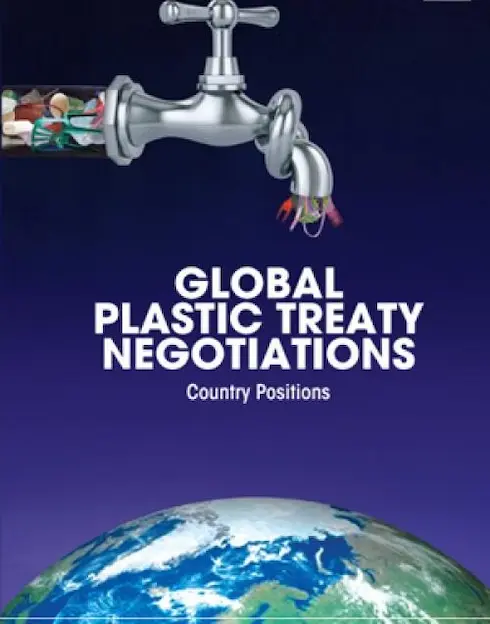
Why in News
The second part of the fifth session (INC5.2) of the Intergovernmental Negotiating Committee began in Geneva, Switzerland, focusing on finalising a legally binding international treaty on plastic pollution. This is a crucial milestone in global environmental diplomacy.
Background
- Formation: Established by UN Environment Programme (UNEP) in March 2022.
- Mandate: Draft a treaty addressing the entire life cycle of plastics — from production to disposal — by end of 2024.
- Nature of Work: Similar to earlier landmark treaties like:
- Convention on Biological Diversity (CBD), 1992
- UNFCCC, 1992
- Participation: All UN member states + industries, civil society, indigenous groups, and waste pickers.
INC Sessions Timeline
- Uruguay – Nov–Dec 2022
- France – May–Jun 2023
- Kenya – Nov 2023
- Canada – Apr–May 2024
- South Korea – Nov–Dec 2024 (Final session)
Key Debates
- Scope of treaty – binding vs voluntary provisions.
- Differentiated responsibilities for developed and developing countries.
- Financing & technology transfer mechanisms.
- Compliance monitoring and enforcement measures.
Goals of the Treaty
- Global norms for plastic production and waste management.
- Binding targets + voluntary approaches.
- Funding mechanisms for developing countries.
- Promotion of circular economy principles.
- Support for informal waste pickers and recycling communities.
Significance for India
- India is a major plastic producer and consumer.
- Treaty could impact domestic manufacturing standards and waste management rules.
- Opportunity for India to lead in sustainable alternatives and plastic recycling innovations.
Exam Connect – Possible Questions
Prelims
1. The Intergovernmental Negotiating Committee (INC) established in 2022 is mandated to:
A. Negotiate an international treaty on biodiversity loss.
B. Draft a legally binding agreement on plastic pollution.
C. Oversee compliance with the Paris Climate Agreement.
D. Monitor ozone-depleting substances under the Montreal Protocol.
Answer: B. Draft a legally binding agreement on plastic pollution.
2. Which of the following is/are addressed under the mandate of the INC on plastic pollution?
1. Plastic production
2. Plastic design and usage
3. Plastic disposal and waste management
Select the correct answer using the code given below:
A. 1 only
B. 1 and 2 only
C. 2 and 3 only
D. 1, 2 and 3
Answer: D. 1, 2 and 3
Mains
1. Discuss the significance of the proposed global plastics treaty in addressing transboundary environmental challenges. How should India prepare for its implementation?
2. Evaluate the role of multilateral negotiations like the INC process in promoting circular economy principles.
7. U.S. Tariffs and Their Implications for India’s Growth Rate – Economy
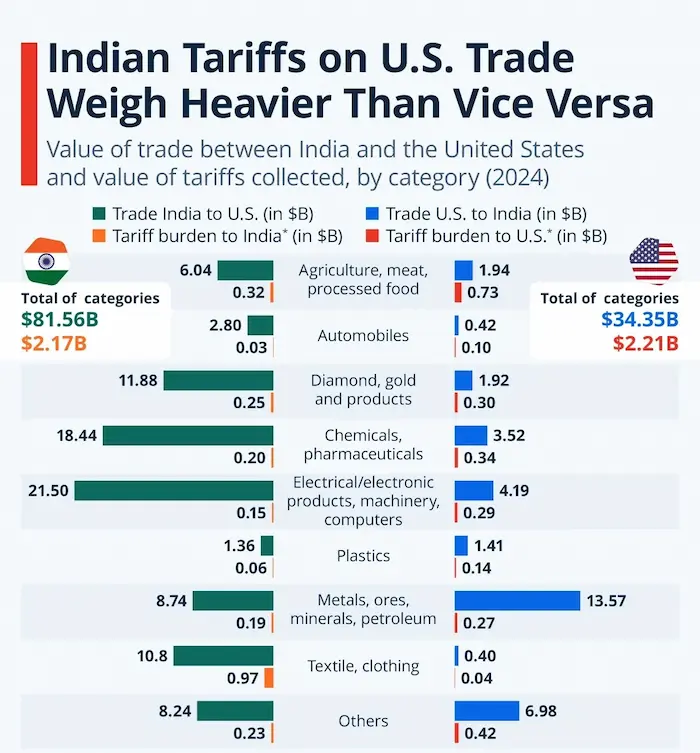
Why in News
The United States has imposed:
- 25% reciprocal tariff on Indian exports (effective 7 August 2025)
- Additional 25% penal levy (effective 29 August 2025) due to India’s continued crude oil imports from Russia.
These measures could affect India’s GDP growth, trade balance, and current account stability.
Background
- India enjoys a $41.18 billion merchandise trade surplus with the U.S. (2024–25).
- The tariffs are part of a strategic trade policy linked to geopolitical concerns, particularly over Russian oil imports.
Impact Assessment
- Trade Balance
- Import elasticity assumption: -1 → significant fall in exports to U.S.
- Trade deficit could widen by 0.56% of GDP → total trade deficit ~ 7.84% of GDP.
- GDP Growth
- Estimated drop: 0.6 percentage points → from 6.5% to 5.9%.
- Current Account Deficit (CAD)
- Expected rise: 0.6% → 1.15% of GDP.
Mitigating Factors
- Trade diversification: New trade agreements with the U.K.; ongoing negotiations with the EU.
- Currency depreciation: A weaker rupee could improve export competitiveness.
- Domestic reforms: Strengthening manufacturing and service sector capabilities to offset losses.
Significance & Strategic Concerns
- Economic: Immediate impact on export-oriented industries; higher import costs due to crude oil price shifts.
- Geopolitical: Tariffs used as a coercive trade tool; underscores vulnerability of overdependence on single markets.
- Policy response:
- Active diplomatic engagement with U.S.
- Accelerating FTAs with diverse partners.
- Reducing reliance on imported energy via renewable push.
Exam Connect – Possible Questions
Prelims
1. With reference to India’s trade balance with the United States, which of the following statements is correct?
A. India has a merchandise trade deficit with the U.S.
B. India has a merchandise trade surplus with the U.S.
C. India’s trade with the U.S. is balanced.
D. India only trades in services with the U.S., not goods.
Answer: B. India has a merchandise trade surplus with the U.S.
2. An increase in the U.S. tariff on Indian exports is most likely to:
1. Reduce India’s export volume to the U.S.
2. Increase India’s current account deficit.
3. Strengthen the Indian rupee against the U.S. dollar.
Select the correct answer using the code given below:
A. 1 and 2 only
B. 2 and 3 only
C. 1 and 3 only
D. 1, 2 and 3
Answer: A. 1 and 2 only
Mains
1. “The recent U.S. tariff measures against India reflect the growing use of trade policy as a geopolitical weapon.” Discuss, highlighting their economic and strategic implications for India.
2. Suggest a comprehensive strategy for India to mitigate the impact of external tariff shocks while sustaining GDP growth.

